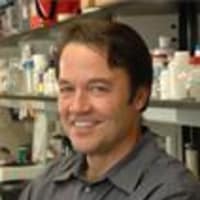Password Reset
Forgot your password? Enter the email address you used to create your account to initiate a password reset.
Forgot your password? Enter the email address you used to create your account to initiate a password reset.

Senior Investigator,
Molecular and Clinical Hematology Section
John Tisdale graduated from the College of Charleston in South Carolina with a B.A. in chemistry in 1986. He then earned his M.D. from the Medical University of South Carolina in 1990. He did his internship and residency at Vanderbilt University School of Medicine and was Chief Resident at the Nashville Veterans Administration Medical Center from 1993 to 1994. He joined the NHLBI in 1994, where he has been a hematology fellow, senior staff fellow, and Clinical Investigator. He joined the Molecular and Clinical Hematology Branch of the National Institute of Diabetes and Digestive and Kidney Diseases in 1998 as a tenure track Investigator and was tenured in 2007. In 2011 the College of Charleston recognized Dr. Tisdale with the Alumni of the Year Award and the Pre-Medical Society’s Outstanding Service Award in Medicine. He was recently elected to the American Society for Clinical Investigation and is a member of the American Society of Hematology. Dr. Tisdale has authored or coauthored more than 140 papers.
Research Interests:
Sickle cell disease (SCD) has its roots in genetic mutations that cause a single amino acid change in the ?-globin chain of hemoglobin A and thereby confer protection against malaria. Whereas one copy of the mutated gene is an asset in areas where malaria is endemic, two copies become a liability regardless of geographic location. The unadulterated mutation encourages hemoglobin to clump and deform red blood cells, leading to anemia, increased hemolysis, and vascular occlusions that affect multiple organs. Dr. Tisdale is working on multiple strategies both in the laboratory and in the clinic to cure sickle cell disease by repairing or replacing the precursor bone marrow cells that give rise to sickled red blood cells.
Bone marrow transplants from healthy donors are used successfully to treat certain blood cancers for which the course of the disease is so severe that the destruction of the patient’s own immune system through high-dose chemotherapy and radiation seems an effective compromise. However, the therapeutic balance in the case of SCD is less clear; children tolerate transplants more successfully, but they are also less imminently threatened by the disease. The success of conventional transplants in adults, whose need is more immediate, is less clear.
The issue of immune tolerance is, of course, central to transplantation research. Dr. Tisdale has an active research program in trying to characterize tolerance and create conditions in which patients will more easily tolerate donor cells and tissues without the need for destroying the immune system or perpetual use of immunosuppressant drugs.
Dr. Tisdale and his colleagues recently completed early trials of a modified transplant strategy in adult patients with SCD. In a recent study, they demonstrated that they could transplant bone marrow cells from HLA-matched sibling donors without needing to completely destroy the patient’s immune system. This “mixed chimerism” appears to persist without the need for the ongoing immunosuppression that other types of transplants require. The important innovation in the protocol was the short-term destruction of the patient’s T-lymphocytes through a depleting antibody, followed by their regrowth under the influence of the mTOR inhibitor rapamycin. The next phase of this work is to extend the concept with alternative strategies to include donors who are not perfectly matched (thereby including a half-matched sibling, parent, or child).
Dr. Tisdale and his colleagues also have an ongoing research agenda to find a gene therapy strategy for SCD. This project is in an earlier phase of development, although accrual to a protocol testing this approach has begun. After extracting and isolating precursor CD34+ cells from patients, they use viral transduction to insert a correct copy of the ?-globin gene before returning the cells to the patient’s bone marrow. The laboratory has focused on optimizing the conditions for viral transfection, including selecting and modifying viral strains for study in animal models, optimizing growth conditions for transduced hematopoietic cells, and designing gene vectors to ensure appropriate placement and expression of the inserted gene.
Finally, strategies to correct the underlying mutation which causes SCD are being pursued utilizing newly developed gene editing tools, and work in the laboratory to develop methods for efficient editing of hematopoietic stem cells is underway.